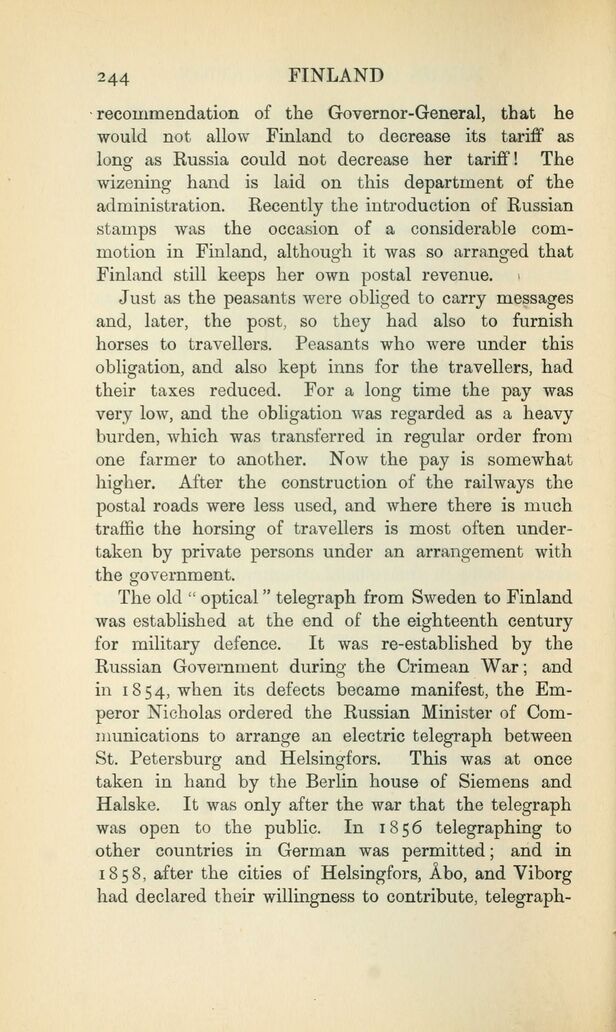
Full resolution (JPEG) - On this page / på denna sida - IX. Means of Communication

<< prev. page << föreg. sida << >> nästa sida >> next page >>
Below is the raw OCR text
from the above scanned image.
Do you see an error? Proofread the page now!
Här nedan syns maskintolkade texten från faksimilbilden ovan.
Ser du något fel? Korrekturläs sidan nu!
This page has been proofread at least once.
(diff)
(history)
Denna sida har korrekturlästs minst en gång.
(skillnad)
(historik)
recommendation of the Governor-General, that he
would not allow Finland to decrease its tariff as
long as Russia could not decrease her tariff! The
wizening hand is laid on this department of the
administration. Recently the introduction of Russian
stamps was the occasion of a considerable commotion
in Finland, although it was so arranged that
Finland still keeps her own postal revenue.
Just as the peasants were obliged to carry messages
and, later, the post, so they had also to furnish
horses to travellers. Peasants who were under this
obligation, and also kept inns for the travellers, had
their taxes reduced. For a long time the pay was
very low, and the obligation was regarded as a heavy
burden, which was transferred in regular order from
one farmer to another. Now the pay is somewhat
higher. After the construction of the railways the
postal roads were less used, and where there is much
traffic the horsing of travellers is most often
undertaken by private persons under an arrangement with
the government.
The old “optical” telegraph from Sweden to Finland
was established at the end of the eighteenth century
for military defence. It was re-established by the
Russian Government during the Crimean War; and
in 1854, when its defects became manifest, the
Emperor Nicholas ordered the Russian Minister of
Communications to arrange an electric telegraph between
St. Petersburg and Helsingfors. This was at once
taken in hand by the Berlin house of Siemens and
Halske. It was only after the war that the telegraph
was open to the public. In 1856 telegraphing to
other countries in German was permitted; and in
1858, after the cities of Helsingfors, Åbo, and Viborg
had declared their willingness to contribute, telegraphing
<< prev. page << föreg. sida << >> nästa sida >> next page >>